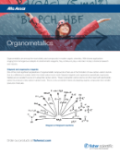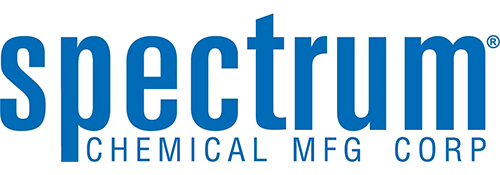Organic Compounds
Organic compounds are, at the most basic level, compounds that contain carbon and hydrogen. These compounds are called organic because they were once believed to have been derived from living things, but that is not necessarily the case. There are millions of organic compounds that occur naturally or can be produced synthetically. Examples of organic compounds are carbohydrates, fats (lipids), proteins, and nucleic acids, which are the basis for the molecules of life. Organic compounds also include petroleum and natural gas, which are the main components of fossil fuels.
MoreScale Up Production

Chemical Structure Search
Find the right chemicals for your experiments. Search Now

Unityв„ў Lab Services
Get integrated lab services, support, and supply management. Learn More

Talk with a Chemical Specialist
They can answer any specific questions you have or help you place an order. Contact Us

Bulk and Custom Chemical Solutions
Have chemicals made to your specifications in the quantities you need. Learn More
Browse by Functional Group
Featured Products
AcroSeal Protection
What sets AcroSeal apart? No accidental removal, adhesive-free sealing for less risk of contamination, better reseal, longer product life, higher package integrity, and more.
Alfa Aesar Organometallics Brochure
Learn more about organometallics and browse a selection of Alfa Aesar Grignard reagents, organozinc reagents, and other organometallics.
- Alfa Aesar Organometallics Brochure (7.7 MB)
AcroSeal Packaging Brochure
Learn about the important reactions that could benefit from your use of reagents packaged with AcroSeal.
- AcroSeal Packaging Brochure (2.6 MB)
TCI Chemicals Overview Brochure
Learn more about TCI and read an overview of their product offering.
- TCI Chemicals Overview Brochure (2.4 MB)
TCI Production Chemicals Data Sheet
Browse popular bulk chemicals available from TCI.
- TCI Production Chemicals Data Sheet (63.2 KB)
More
Acros Organics Organolithium Reagents Data Sheet
Learn more about Acros Organics Organolithium Reagents and find the right products for your work.
TCI Production Chemicals Brochure
Learn how TCI can support the success of your long-term, large-scale production projects.
Acros Organics Focus on Organics: Aluminum Hydrides and Borohydrides as Reducing Agents Flier
Learn about using these compounds as reducing agents for carbonyl groups and similar functionalities.
Acros Organics Focus on Organics: Meta-Chloroperoxybenzoic Acid Flier
Explore key applications for meta-chloroperoxybenzoic acid and helpful literature references.
Acros Organics AcroSeal Packaging Catalog
See how AcroSeal packaging protects organic solvents and pyrophoric and hazardous reagents that are sensitive to air and moisture.
Maybridge HitCreator Library Flier
Use the diverse and high-quality Maybridge HitCreator screening library to find drug-like compounds for your drug discovery process.
- Maybridge HitCreator Library Flier (409.9 KB)
Acros Organics Focus on Organics: Products for Organobromination Chemistry Flier
Explore the Acros Organics organobromine compounds commonly used as intermediates in organic synthesis.
Alfa Aesar Organics Flier
Explore the comprehensive range of Alfa Aesar organic building blocks, functional reagents, and other organic chemicals.
- Alfa Aesar Organics Flier (181.9 KB)
Acros Organics Review of Organosilanes in Organic Chemistry Brochure
Learn more about Acros Organics organosilanes and their use as protecting groups to intermediates and other roles in organic synthesis.
Acros Organics Focus on Organics: The Synthesis of Lisinopril Flier
Find Acros Organics products used to synthesize lisinopril, a commonly prescribed generic medication for treating hypertension.
Complete Your Workflow
Synthesize and Monitor
Purify and Analyze
The organic chemical products presented in this section were classified by structural elements, such as functional group, using the ChemOnt taxonomy and ClassyFire database as referenced in the following articles:
1. Hastings et al. (2012). Structure-based classification and ontology in chemistry. Journal of Cheminformatics, 4-8.
[This is an Open Access article distributed under the terms of the Creative Commons Attribution License (http://creativecommons.org/licenses/by/2.0)]
2. Feunang, D. et al. (2016). ClassyFire: automated chemical classification with a comprehensive, computable taxonomy. Journal of Cheminformatics, 8-61.
[This article was distributed under the terms of the Creative Commons Attribution 4.0 International License (http://creativecommons.org/licenses/by/4.0/). The Creative Commons Public Domain Dedication waiver (http://creativecommons.org/publicdomain/zero/1.0/) applies to the data made available in this article, unless otherwise stated.]













